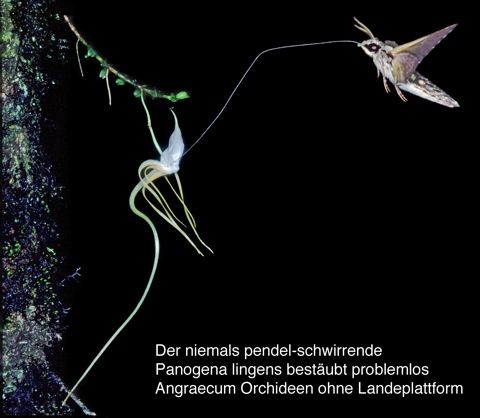Wasserthal, L. T. (2015): Angraecum-Orchideen und langrüsslige Schwärmer, Bestäubung und Evolution. Die Orchidee 66(3), 175-181.
Since DARWIN the extremely long tongues of tropical hawk moths have been interpreted to be the result of a coevolutionary race with long nectar spurs of orchids. However, extremely long-proboscis hawkmoths are not restricted to the exploitation of highly specialized sphingophilous flowers. Due to their long tongues and a swing-hovering flight they avoid ambush predators such as huntsman spiders, which lurk among flowers. However, swing-hovering hinders full insertion of the proboscis into the long spurs of orchids. Some orchids prevent the moths from the swinging flight by forcing them to land on their protruding labellum. This is the case with Angraecum sesquipedale and Xanthopan morganii praedicta. Illegitimate visitors with tongues longer than the orchid spurs can exploit the nectar or even waste the pollinaria, thus exerting selection pressure towards spur elongation with the consequence of pollinator-shift from shorter- to longer-tongued moths.


